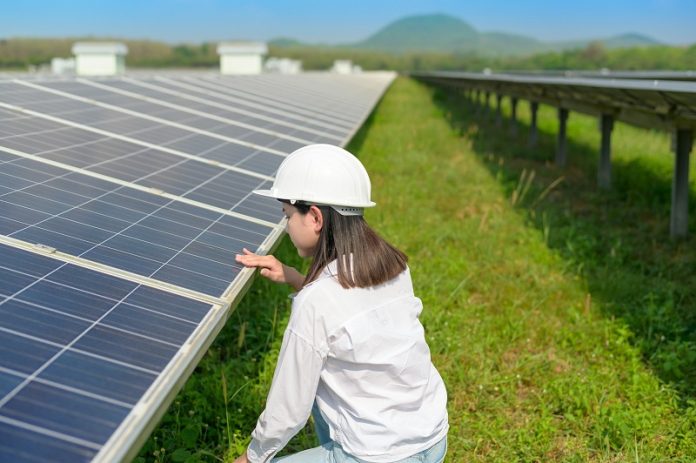
Scientists have found a way to make solar cells both more powerful and longer-lasting by using hydrogen-bonding additives.
This breakthrough could bring us closer to widely available, stable, and efficient solar power.
The research was conducted by a team led by Professor Choi Jong-min from DGIST and Dr. Moon Byung-joon from the Korea Institute of Science and Technology, and the results were published in Energy & Environmental Science.
The focus of the study is perovskite, a material that has gained attention for its ability to efficiently turn sunlight into electricity.
Perovskite is also easy to produce on a large scale, making it a promising choice for solar panels. However, there’s a big problem: the perovskite solution used to make these solar cells breaks down over time, creating impurities that harm performance.
Heat speeds up this process, making the cells degrade even faster.
To tackle this issue, the researchers added a special hydrogen-bonding additive to the perovskite solution. This additive forms hydrogen bonds with the organic parts of the solution, protecting key components of the solar cells and preventing rapid changes.
The team used computer models to show how these hydrogen bonds stabilize the materials over time.
They found that solar cells made with a solution stored for 140 days performed almost as well—96.7% efficiency—as those made from freshly prepared solution. This stability is a big step forward for solar cell technology.
The additive not only improved stability but also boosted performance. The power conversion efficiency of the solar cells increased from 22.61% to 24.31%, thanks to fewer defects in the material.
These enhanced solar cells also withstood high temperatures (85°C) for 72.5 days and retained over 98% of their initial performance.
Professor Choi explained, “This research shows we can solve the problem of unstable ions in traditional perovskite solar cells by using an additive that relies on hydrogen bonding. This approach is a game-changer for addressing thermal instability and advancing solar cell commercialization.”
This discovery could make solar panels more durable and efficient, paving the way for a cleaner and more sustainable energy future.
Source: KSR.



